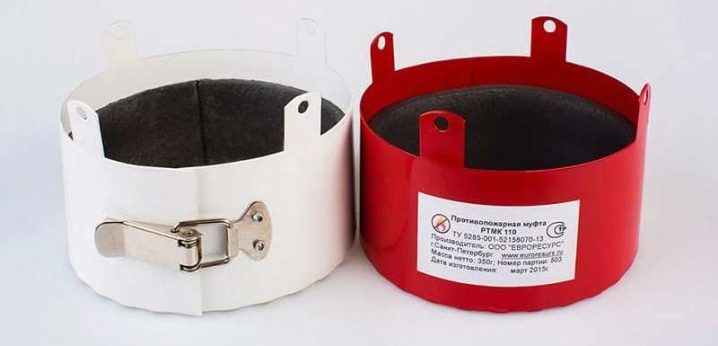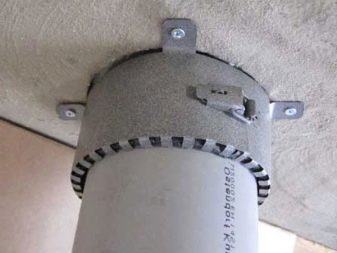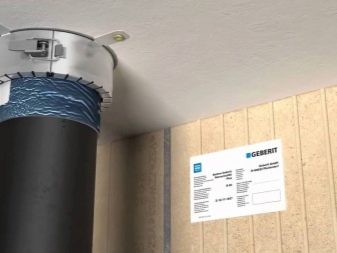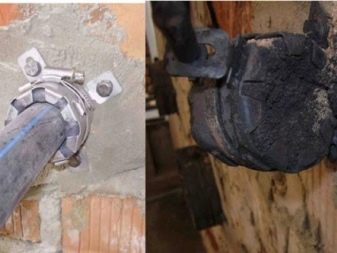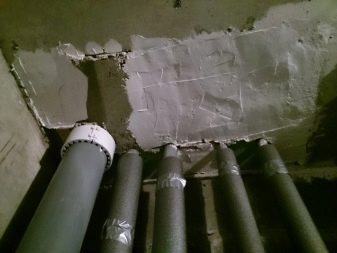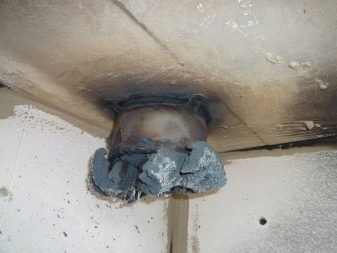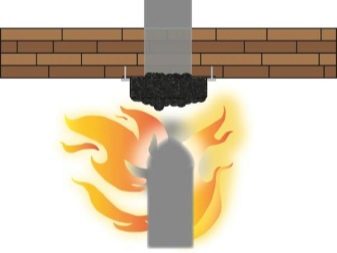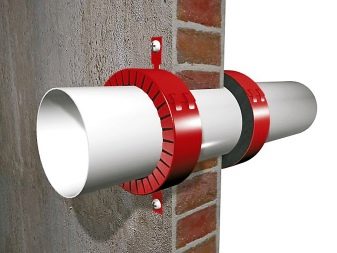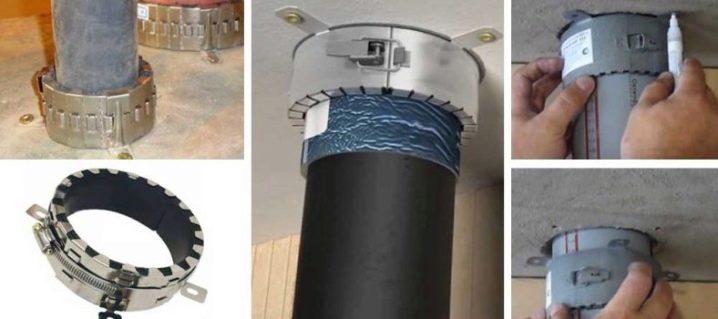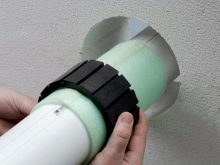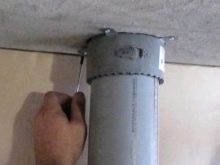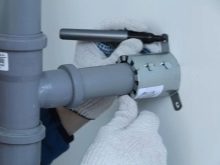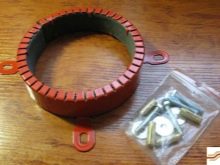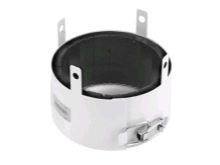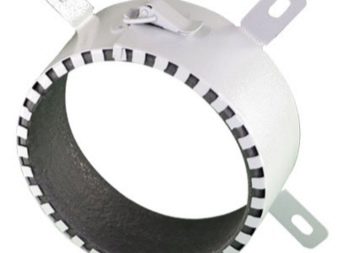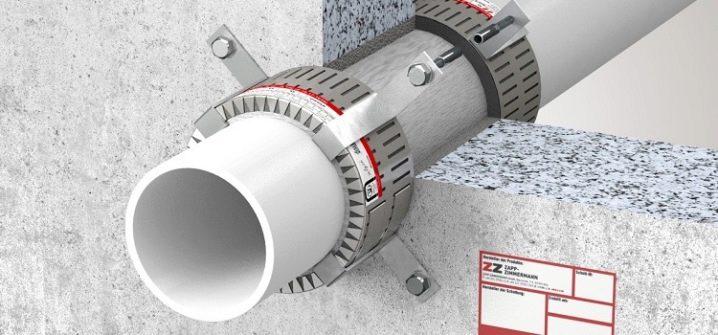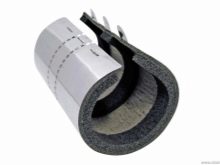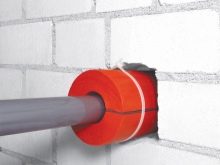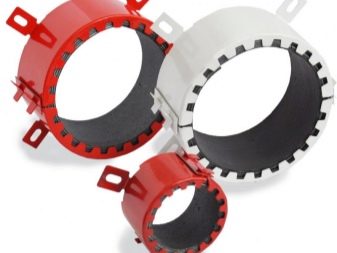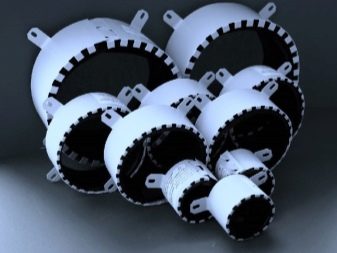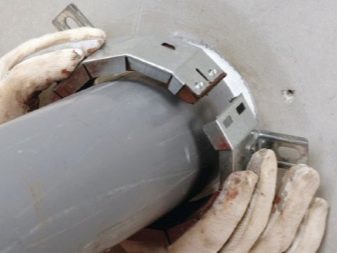Fire cuffs for sewage: modifications and their purpose
Sewerage and drainage systems should be designed for operation not only in normal but also in non-standard conditions. In the event of a fire, such systems are subject to powerful negative effects. To increase their security, apply special additional funds.
Features and requirements
According to SNiP, sewage and drainage facilities must be reliably covered from the negative factors of fire development. Additional safety measures are tailored to the type of waste used and also depend on the material used. Installation of a fire coupling is possible at the entrance to the living space, if risers made of polymeric materials are placed there.The purpose of such couplings is twofold - to avoid the destruction of the underlying structures themselves and to delay the overall development of the fire. Since polymers are designed for heating up to 180 degrees, they melt, burn out, and open up an unlimited channel of access to fire.
According to the rules of PPB, it is required to install fire couplings and cuffs both in residential buildings and production facilities. For storm sewers, they must be installed at the places of passage through the floors and at the entrances to the buildings.
Plastic sewer pipes should be equipped with cut-offs:
- on the passage through each slab;
- inside the technical floor;
- when put to the roof (the specific type of plastic pipes does not play a role, protection is always obligatory).
According to the standards in force in Russia, the points of passage of the risers through the overlap must be still sealed with cement. This is done strictly on the same thickness as the overlap thickness. Over the overlap over 80-100 mm, a layer of cement should be formed no thinner than 20 and no thicker than 30 mm. If the calculated starting temperature of the suction smoke vent is ensured, the polypropylene will still light up,unlike polyethylene. However, only the closure of the clutch prevents the transfer of fire further, and the formation of enhanced traction.
The insert is designed in such a way that:
- eliminate the slightest toxicity;
- ensure ductility;
- ensure neutrality to water;
- eliminate the appearance of your own or absorption of foreign odor.
Principle of operation
Fire coupling contains a substance that expands several times during heating. This expansion covers the internal cavity of the pipe. As a result, the occurrence of holes in the ceiling is reliably prevented. The room, which turned out to be a hotbed of fire, loses all or largely oxygen. The fire cannot overcome the defense. Therefore, it is easier and easier to deal with it.
Fastening is carried out in the same way as for an ordinary sewer pipe. But the created protective pipeline has no socket. The design is carried out in such a way as to guarantee operation for 50 years. When the air temperature does not exceed the normal values achieved without fire, the cuff ensures tightness.The use of such structures on top of metal pipes is optional (although desirable).
To hold the coupling on the floor slabs, it is required to use dowels, and in order to avoid liner falling off, a lock (special latch) is used. The outer shell of the cuffs is specially molded from steel. This metal due to its high thermal conductivity helps to warm the liner faster. And when a fire occurs, the speed of the protective action is very important. Statistics show that fire couplings are one of the most advanced means of counteracting fire.
Attach the fire cuffs other than directly onto the sewer channel is not allowed. In this case, the second fastening is carried out on plates or walls through which this channel passes.
It is forbidden to use for holding structures anything other than steel. Other materials are either not sufficiently resistant to heat, or interfere with the rapid opening of the tab, or are very weak mechanically. Installation can be also internal, then metal fasteners are not used, and use a solution of sand and cement.
To attach the cuff, use perforators, which clamp the drill with a diameter of 0.6 or 0.8 cm. It is also difficult to do without a set of dowels with screws.To bend the petals inside the body (when initially a direct course) must be strictly 90 degrees. When the clutch lock is open, it is opened and the polymer liner is inserted. Next, the mechanism is strung on top of the pipeline section, where the riser passes. After the petals are pressed tightly against the ceiling, the lock must be locked.
Immediately after this, 4 positions for fixing are marked with a marker. After removing the part, begin to drill holes on the marks. When they are ready, they put the clutch on again. It is pressed down slightly to the ceiling. Then they fasten a lock on the side surface and attach the main part to the concrete using self-tapping screws.
Kinds
According to official regulations, the use of fireproof cuffs for sewage pipes made of PVC should be thought out at the design stage of the sewage system itself. The standard barrier has the category of resistance to flame, denoted as EI 120-EI 180. The numbers in the index are not accidental, they show the number of minutes that the design and the liner must withstand.
Even with the direct impact of the flame, at that time neither the destruction of the surface layer, nor the contact of the fire with the protected pipe, nor the ignition of the sewage system should occur.Couplings are used either for plastic pipes made of heat-resistant polypropylene (but it is rarely used in residential construction), or for structures made of self-extinguishing polyvinyl chloride of categories G1 and G2.
There are options for polyethylene pipes, but they are very rare in the internal sewage of buildings. Of great importance and careful choice of diameter. For a sewer network with 110 mm cross section, one clutch will do, and if this section is 130 mm, a different solution is required. Yet it is exactly 110 mm that is a typical version of the sewage system, that’s why this is the inner diameter of the protective sleeves. For the manufacture of the body can be used as a cold steel metal, and cast steel with a zinc layer. Thickness varies from 0.05 to 0.2 cm.
To be able to put the cuff on the plastic pipe, on the side of it prepared a special connection. It is formed in the form of a lock latch that has undergone a preliminary galvanic treatment. If the cuff is to be fixed to the ceiling, its top is equipped with “ears” in the form of petals. The petals have holes, the length of which is approximately 3.5 cm. This design is called the “Fire model”.
Looking at the other side - in the lower part of the body, it is possible to detect teeth looking deep into. They usually fix the insert at the usual time, preventing its loosening. If it is time to act, it is these teeth that become guides for the liner - they allow you to close the opening not only quickly, but also accurately. The locking structure itself in any type of coupling is composed of a granite-rubber alloy produced using a special technology. This substance is called "coenox".
Protection of the internal sewage system should be provided on both sides of the floor slab, if the channel is made of combustible material. But when using sewage from non-combustible substances, there is enough of the cuff located below. If you plan to protect the plastic pipeline that goes through the ceiling or side walls in adjacent rooms, you also need to use similar approaches.
A special type of coupling is designed to protect discharge pipes. They must be inserted into the gap separating the floor slab from the ladder. The fact is that the heating pipeline gradually drips and pours down, the drain hole is released,so that it immediately entered the extended tab.
Attach the case sometimes have a few other ways. This is due to the fact that some designs provide for twisting on the side bolts. When choosing a suitable design, you should be guided by the provisions of SP 40-102-2000 and SP 40-107-2003. The same regulatory documents will help to finally understand the methods of installation. Wherever the fire cuff is bought, for what it is intended, experts advise to require the provision of certificates for compliance with fire safety regulations.
Installation of any PPM is allowed, partially entering inside the opening. Then from the wall or from the floor comes out only the top of the case. In such cases, saturation with a solution of concrete, plaster, wet technology or fire-resistant foam must be made. An additional requirement is the refusal of pressing to the case of fasteners in a similar pattern of execution. This will increase the overall reliability and rigidity of the structure. All types of sleeves and cuffs that meet established standards can be mounted both vertically and horizontally and tilted.
Water drainage from residential buildings is insured with fireproof cuffs of sizes from 5 cm. If we are talking about a riser in an apartment or office, the necessary solution ranges from 11 to 16 cm. All the necessary solutions of any of the indicated sizes can be supplied by the St. Petersburg company Ogneza. You can also buy PPM in cases of galvanized or stainless steel grades under the brand "Soyuzpromtech". But in Moscow, Phoenix cuffs are made, the diameter of which varies from 1.6 to 20 cm. Fire resistance is at the highest level.
Scope of application
It is quite simple to install expanding anti-personnel mines on sewers, it does not entail significant time and money. A specially thought-out device can be easily delivered where space for movement is limited. It is possible to install couplings adapted to the main diameters of the internal sewage and stormwater.
Important: re-installation of the cuffs that have not yet been exhausted will be needed if the risers themselves go down.
In addition to clutch protection, it is practiced:
- the use of special paints and mastics;
- the use of sealants;
- application of expanding fire foam.
On the installation of fire couplings on the sewers, see the following video.

